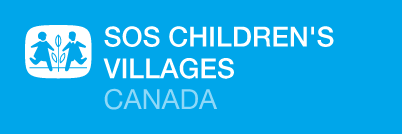1970's Africa
|
1971- Into Africa
A French priest named Father Martin had created an orphans’ home near Abidjan, the country’s (Côte d’Ivoire) largest city, as early as the 1960s. Many children needed homes at the time because traditional family structures were crumbling and unemployment was high.
Eventually Father Martin received official help in obtaining a plot of land in Abobo-Gare, nine miles outside of Abidjan. In 1971 the priest met Hermann Gmeiner and they joined forces to start Africa’s first SOS Children’s Village. That Village was built in a palm grove, and today has ten family houses that provide stable homes for a hundred children.
In 1980 local Village staff became aware that custom in a nearby region dictated that families abandon their tenth child who allegedly would bring bad luck. This tragic situation prompted SOS to build a second Children’s Village, in Aboisso.
HIV/AIDS has orphaned more than 310,000 children in Côte d’Ivoire. Because of the illness’s stigma, the husbands of women known to be HIV positive are often pressured by relatives to abandon their wives and children. Working with local NGOs, SOS gives a monthly food package to families and provides basic medical care. Since 2004, SOS Côte d’Ivoire has also built facilities to provide medical assistance to people with AIDS. SOS offers families a sense of dignity by engaging them in income-generating activities.
Dona, for example, a grandmother caring for several small children, bought a second refrigerator to increase her capacity to sell cold drinks and ice cream. The children raised in Côte d’Ivoire’s two SOS Villages enjoy lives unheard of for most of the country’s orphans. “They eat well, sleep well, and have all that is needed for their well-being and success,” says 55-year-old Elizabeth, an SOS mother who retired in 2005 after twenty-two years of raising SOS children in Cote d’Ivoire.
Ghana Education
Strengthening families and offering a first-rate secondary education have been priorities for SOS in Ghana, which hosted its first SOS Children’s Village in 1974. After a chance exposure to SOS activities while visiting Norway in the late 1960s, Ghanan social worker Mercy Busia contacted Kimderdorf International and requested an SOS Children’s Village be built in her country.
Ghana’s first such Village opened in 1974 in Tema, a port city twenty miles from the capital of Accra. Today, the SOS Hermann Gmeiner International College, a senior secondary boarding school founded in 1990, offers a baccalaureate to talented SOS youths from all over Africa.
SOS progress in Africa has been mixed with tragedy. For instance, SOS Children’s Villages remained in Somalia throughout nearly two decades of civil war.
Today SOS runs a mother and child clinic in Mogadishu and hospital that is the only one of its kind. Other sad scenes took place in Ethiopia, Rwanda, Sierra Leone, Liberia, Mozambique, Angola, the Democratic Republic of Congo, and Sudan. Yet SOS is still active in all of these countries.
In Liberia, for example, in 2003 more than 8,000 people fled to SOS facilities near the capital, Monrovia, when fighting broke out. In 1999 children, mothers, and staff from SOS Children’s Village Bo in Sierra Leone were repeatedly forced to hide in the bush to survive. In the years to come, Africa will remain the most important target area for SOS Children’s Villages.

